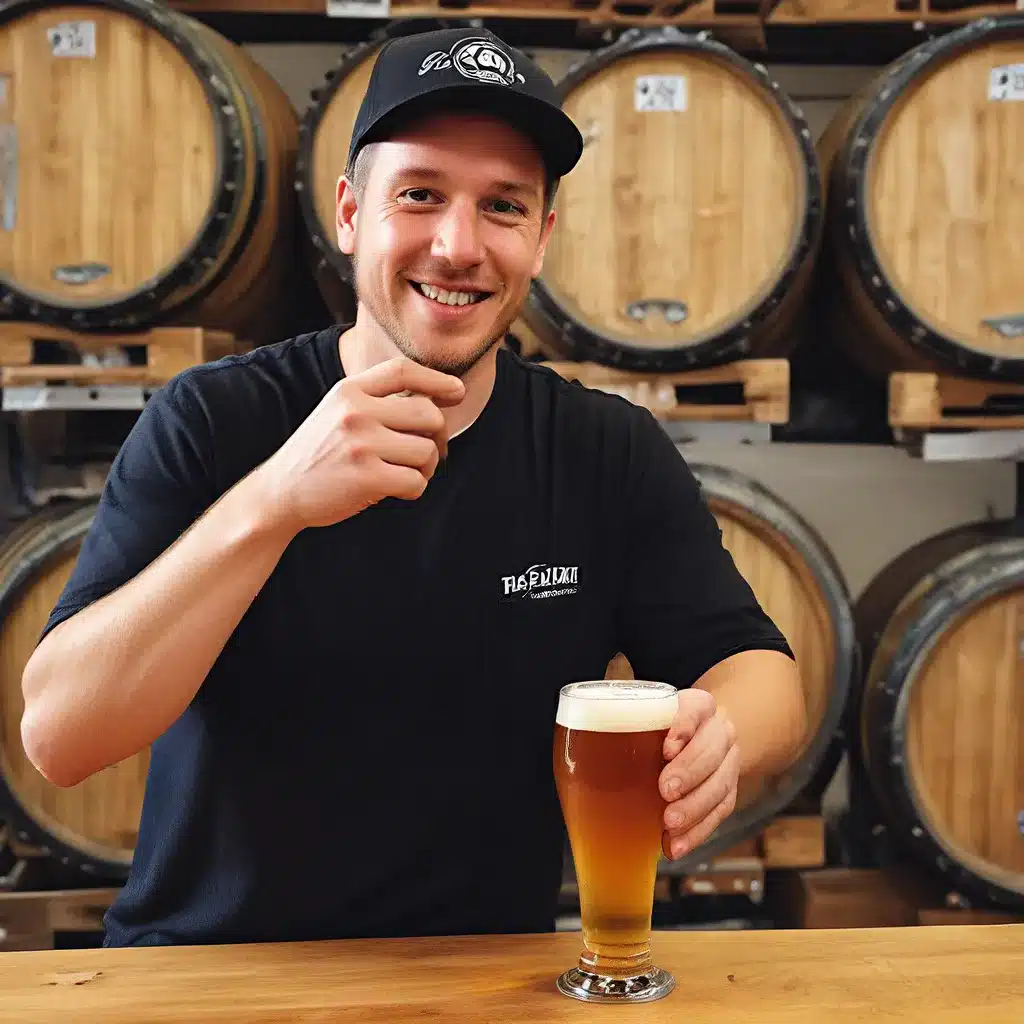
The Culinary Conquest of Craft Beer
Oh, how my palate has evolved over the years! I still remember the first time I tasted a real craft beer – it was like discovering a whole new world. Back in the day, when I was a rebellious teenager, my friend Sean’s older brother would hook us up with Samuel Adams Octoberfest. At the time, we thought it was the epitome of sophisticated drinking. Little did we know, our taste buds were just getting warmed up.
Fast forward two decades, and I find myself on a delicious journey, exploring the intricate interplay between craft beer and the culinary arts. It’s a convergence that has captivated my senses and sparked a newfound appreciation for the creative possibilities that arise when these two passions collide.
Rediscovering an Old Flame
As I recently revisited the Samuel Adams Octoberfest, I was struck by how my perception had shifted. What was once a bold, bitter delight was now a symphony of subtleties – a lingering aroma of red Macintosh apples, a caramelized sweetness that danced on my tongue. It’s funny how our palates can evolve, just like people do. That beer, once the epitome of my youthful rebellion, has now become a familiar comfort, a nostalgic reminder of where my beer journey began.
As the Alcohol Professor review noted, the Samuel Adams Octoberfest malt blend features a harmonious combination of two-row pale malt, Munich-10 malt, and Caramel 60 malt, all balanced by the earthy, herbal notes of Tettnang Tettnanger and Hallertau Mittelfrueh hops. It’s a beer that has stood the test of time, adapting to changing tastes while remaining a reliable autumn companion.
Expanding the Culinary Horizons of Craft Beer
But the true revelations have come in exploring the creative ways in which craft beer and the culinary arts intertwine. It’s a relationship that goes far beyond simply pairing a brew with a dish. No, the intersection of these two passions has given rise to a whole new realm of culinary experimentation and innovation.
Craft brewers have become masters of incorporating culinary elements into their beers, whether it’s the addition of seasonal fruits, spices, or even aged in oak barrels to impart complex, food-friendly flavors. And chefs, in turn, have embraced the versatility of craft beer, using it as a key ingredient in marinades, braises, and even desserts.
It’s a symbiotic relationship that has opened up a world of possibilities, blurring the lines between the brewhouse and the kitchen. Imagine sipping a Belgian-style ale infused with notes of coriander and orange peel, perfectly complementing a plate of mussels in a creamy, beer-based broth. Or indulge in a rich, chocolate stout reduction drizzled over a decadent flourless cake. The potential for culinary magic is truly limitless.
Honoring Tradition, Embracing Innovation
But this creative convergence is not just about reinventing the wheel. It’s also about respecting and preserving the time-honored traditions that have shaped the craft beer and culinary landscapes. Craft brewers and chefs alike are drawn to the artisanal, the handcrafted, the deeply rooted in history.
Whether it’s a classic Bavarian-style Märzen lager or a meticulously sourced heirloom tomato, the appreciation for quality, authenticity, and provenance is paramount. These are the building blocks upon which the most captivating culinary and beer-focused experiences are constructed.
Embracing the Experimental Spirit
Yet, within this reverence for tradition, there is also a palpable sense of adventure and experimentation. Craft brewers are constantly pushing the boundaries, exploring new ingredient combinations, aging techniques, and brewing methods. And chefs, in turn, are eager to engage with these innovative flavors, incorporating them into their culinary creations in unexpected and delightful ways.
It’s a symbiotic dance, where each side inspires and challenges the other, resulting in a dynamic and ever-evolving landscape of culinary and beer-focused delights. From the classic pairing of a crisp, hoppy IPA with a juicy burger to the unexpected delight of a smoked porter-infused barbecue sauce, the possibilities are truly endless.
The Thrill of the Unexpected
And therein lies the true excitement of this culinary-craft beer convergence – the element of surprise, the joy of discovery. Whether it’s stumbling upon a hidden gem of a brewery tucked away in a quaint town or being blown away by a chef’s innovative use of a particular beer style, the thrill of the unexpected is what keeps me coming back for more.
It’s a journey of sensory exploration, where I’m constantly being challenged to expand my palate and rethink my preconceptions. And that, my friends, is what makes craft beer and culinary arts such a captivating pairing. It’s not just about the flavors, but the stories, the passion, and the creativity that go into every sip and every bite.
Embracing the Journey Ahead
As I look towards the future, I can’t help but feel excited about the endless possibilities that lie ahead. Who knows what delightful surprises the next collaboration between a craft brewer and a visionary chef will bring? What new flavor profiles and culinary techniques will emerge, pushing the boundaries of what we thought possible?
One thing is certain: I’ll be there, glass in hand, eagerly anticipating the next chapter in this delicious journey. Because when it comes to the intersection of craft beer and the culinary arts, the only limit is the depth of our imagination.

